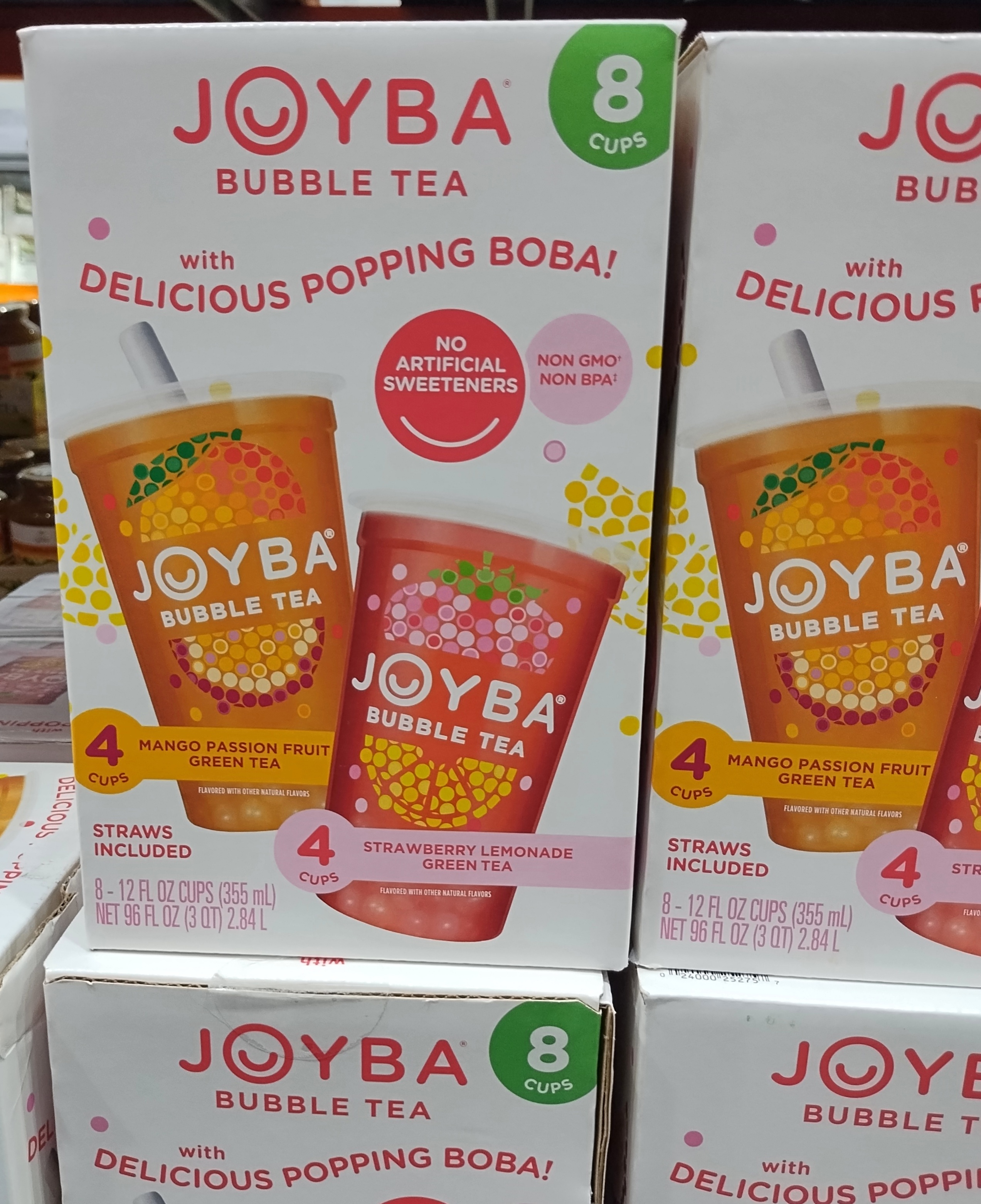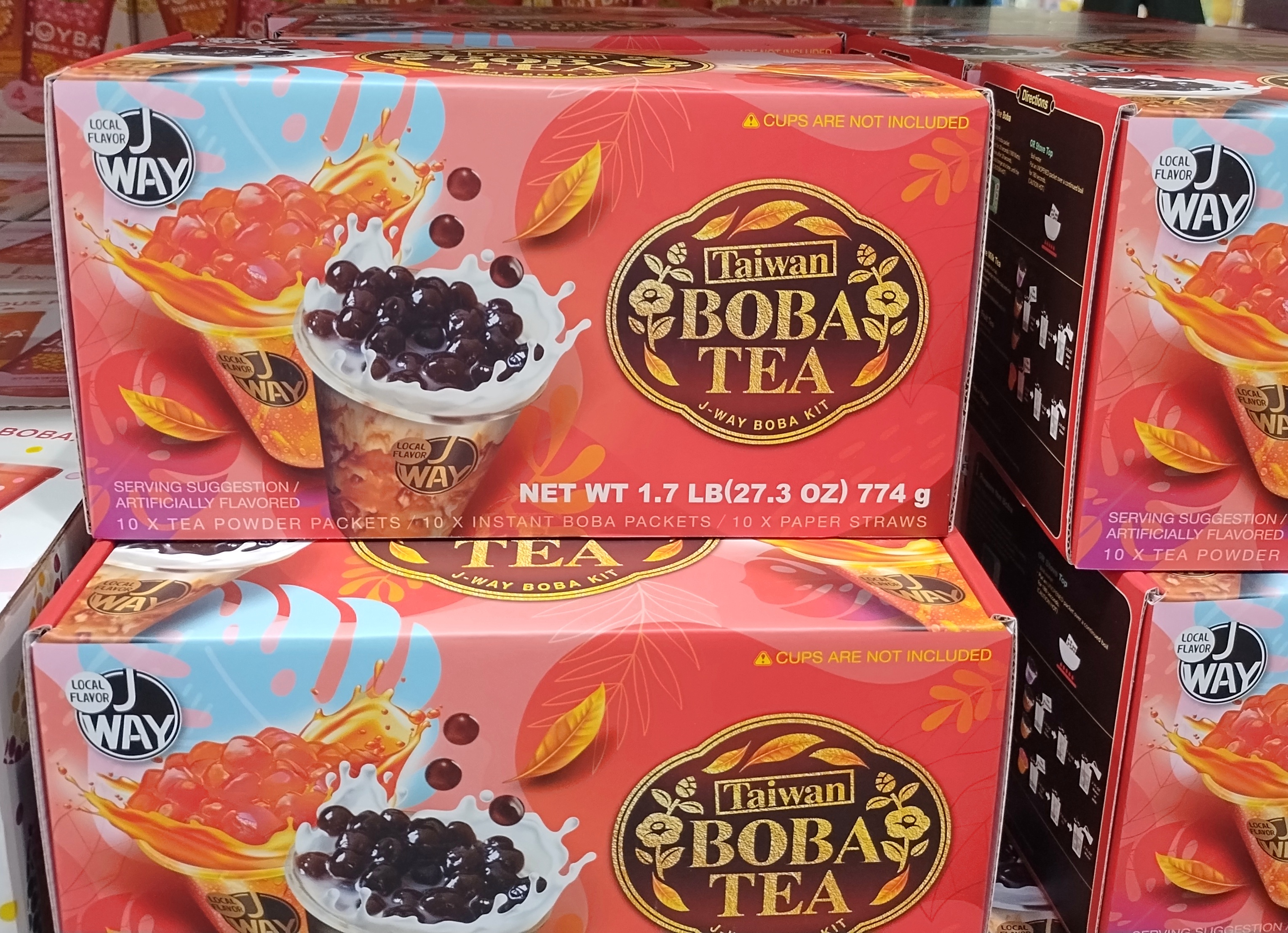Postscript on the tent. I returned it today, and the clerk said I hadn’t been the only one who brought it back for leakage. So I suppose my return is now another data point that the retailer is gathering about the tent. With enough data like that, it might vanish from its shelves sometime, maybe in favor of the brand it used to sell — namely Coleman.
The camping gear is now off display there anyway, as far as I could see, as a seasonal matter. The place is very much attuned to seasonable buying patterns, as any major retailer is going to be. Tents are for spring, as people think about camping.
At least no Christmas stuff yet. That I noticed.
Just an indication of the further march of bubble tea (boba) into the awareness and buying habits of the American consumer, and the businesses out to meet that demand. If you can find it in this warehouse store, that puts it firmly in the U.S. mainstream. I haven’t taken to it myself, but my daughters have, enough to spend time at the boba tea houses that have opened up locally over the last decade or so.
Joyba happens to be headquartered in Walnut Creek, California, though the bubble tea itself is a product of Mexico. Nearshoring in action, I reckon.
Boba’s distinctive ingredient is the tapioca pearl, and the drinks come with straws large enough to pull the pearls through. Bet tapioca makers – cassava growers – are happy about the new worldwide popularity of boba.
“Bubble tea is said to have originated in the eighties in the city of Taichung [Taiwan]. Several tea companies claim to be the creator, so it’s unclear which is the true founder of the popular drink,” reported the South China Morning Post.
“A decade later, the addictively tasty drink reached most parts of East and Southeast Asia with bubble tea shops popping up in every mall and street corner. Since then, it has spread across the globe, including the US, Australia, Europe and South Africa.”

